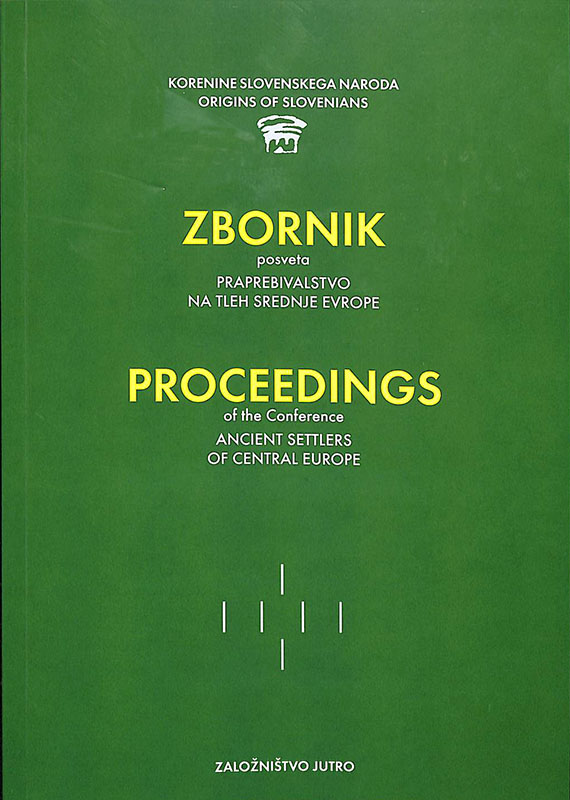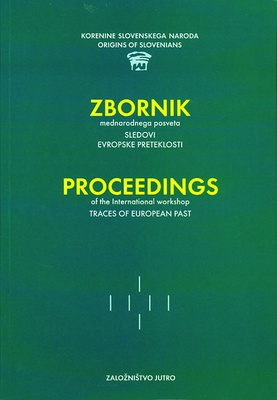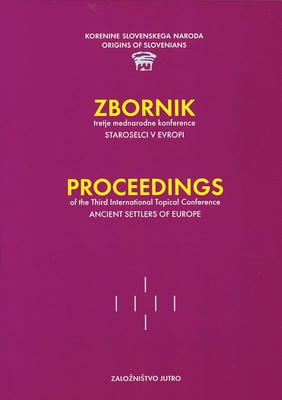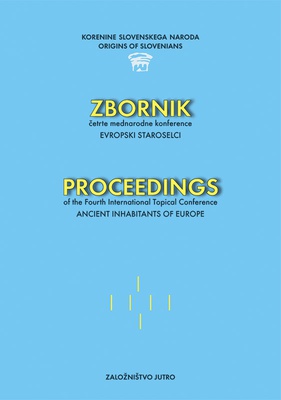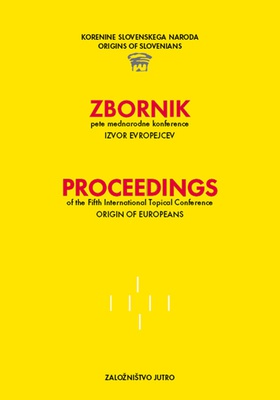SKUPINE KNJIG
(II.) ZBORNIK KONFERENCE PRAPREBIVALSTVO NA TLEH SREDNJE EVROPE (2002)
- Velikost:
- 16,5 x 23,5 cm
- Tisk:
- enobarvni
- Število strani:
- 76
- Vezava:
- broširano
- ISBN:
- 9789616433228
- Prodajna koda:
- 7027
- Cena:
- 6,50 €
Posvet v letu 2002, Praprebivalstvo na tleh Srednje Evrope, je bil pripravljen z namenom, da nam raz širi okvir vedenja o praprebivalstvu na tem prostoru. Sedaj, ko so nam bili predstavljeni dodatni podatki in argumenti, se vedno bolj bistri, kako je pri šlo do podobnosti v baskovskem in slovenskem jeziku in da te podobnosti lahko pomenijo podoben, ne pa nujno isti izvor v času pred zadnjo poledenitvijo. Takrat je bilo celotno območje zaradi velike gibljivosti prebivalstva dokaj homogeno, kar velja predvsem za jezik, ki je bil nujna osnova sporazumevanja.
Pomembni so tudi podatki iz germanskih virov, ki so nam bili do sedaj zamolčani, in ki jasno kažejo, da so bili na sedaj germanskih ozemljih prvotni prebivalci Slovani ter da so bili Germani zavojevalci, ki so Slovane izrivali in jih s svojo agresivnostjo asimilirali in razla ščali, občasno pa tudi sistematično germanizirali. V isto smer kažejo tudi rezultati genetskih raziskav za različne evropske narode in še posebej za Slovence, in tudi nekatere jezikovne primerjave, saj so jeziki zelo trdoživi in se njihov vpliv le počasi izgublja
The main task of the recent symposium held in the year 2002, entitled Ancient Settlers of Central Europe, was to increase our knowledge of the ancient population settling this region. Some new data and arguments were reviewed and it becomes more and more clear how to explain the significant similarity between the Basque and Slovenian languages. These similarities could mean a similar, but not necessarily the same origin at a time before the last glacial period. During that period the population of the whole region was quite homogeneous, in particular as concerns their language, which was essential fortheir communication. This can be apparently explained by the greater migratory mobility of the inhabitants.
There are some important new data from Germanic sources which were up to the present kept in the background. These sources clearly point out that the original population of the presently Germanic territories was Slavic and that the Germanic tribes were conquerers, who pushed out the original Slavic population. This population was eventually expropriated, assimilated and often also systematically Germanized. Evidence in favour of this conclusion are recent results of genetic studies on various European nations, and in particular for the Slovenians. The results of comparative linguistic studies are also significant since languages are quite durable and their influences only slowly fade away.
